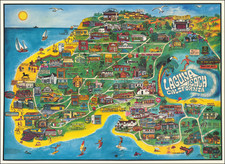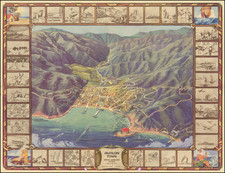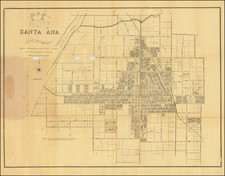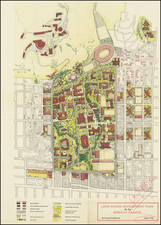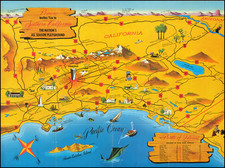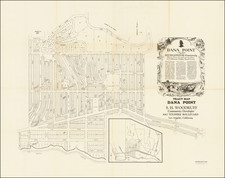This circa 1926 Tahoe Cedars pamphlet offers a promotional portrayal of H.L. Henry's Tahoe Cedars Tract near Tahoma, on the west side of Lake Tahoe.
On one side, the pamphlet begins by laying out precise, bullet-pointed details about Lake Tahoe's geography and the Tahoe Cedars property. Key points highlighted include the size of Lake Tahoe, its depth, elevation, nearby mountains, and even the specific climatic conditions one can expect. The emphasis on the lake's average temperature and the seasonality presents a clear picture for potential investors or visitors about what to anticipate.
The pamphlet provides explicit information on the property's amenities, such as the daily steamers that dock, modern communication facilities like telephone and radio, and recreational aspects like the beach, boat landing, and wharf. In a strategic move, a section is dedicated to early investors, underscoring the profits and benefits of investing in lakefront property, reinforcing the idea of limited availability and the potential for substantial returns.
A prominent segment of the pamphlet highlights the selling agents responsible for this venture—Cooper & Groover—along with the contact details of their office in Los Angeles. However they were evidently booted from the project, as their firm is crossed out in this copy.
Visually, the pamphlet complements its text with an evocative image that encapsulates the serenity and beauty of the Tahoe Cedars region. The tranquil waters, silhouetted trees, and distant boat create an atmosphere of peace, subtly encouraging the reader to be part of this idyllic setting. A series of smaller illustrations depict various recreational activities available, from riding and hunting to tennis and golf, portraying Tahoe Cedars as a haven for outdoor enthusiasts.
On the flip side, the pamphlet presents a well-delineated map, detailing the broader regions surrounding Lake Tahoe. The map indicates the proximity of Tahoe Cedars to notable landmarks and towns, emphasizing its centrality and accessibility. Further, the clear markings of routes, distances, and significant locations assist in orientating the reader about the broader region's layout.
H.L. Henry and Tahoe Cedars
In 1925, H. L. Henry developed the Tahoe Cedars track, intending to establish a motion picture colony, comprising nearly 1,000 lots with infrastructure like power lines and a water system. Notable early property owners included Lon Chaney and writer Francis Rawling Illes. The following year, Frank Swind purchased the Tahoma, introducing amenities such as a dance hall and swimming pool. By 1927, the West Shore's winter residents cleared a path from Tahoma to Tahoe City. Later, the Tahoe Cedars property was sold to followers of Aimee Semple McPherson's Four Square Gospel. However, internal disputes caused the religious settlement's plans to fall apart, leading H. L. Henry to reclaim and sell the property to the general public.











